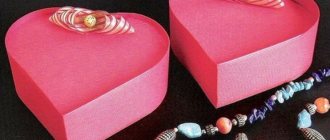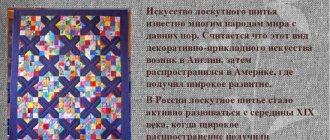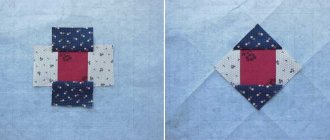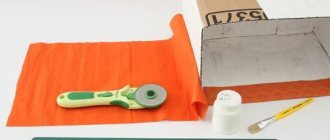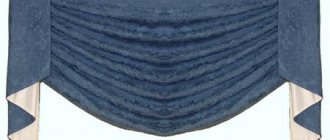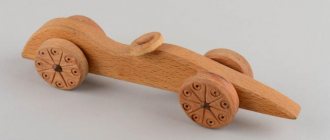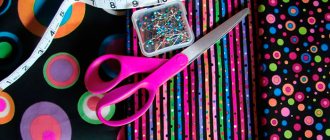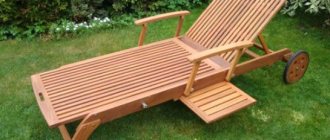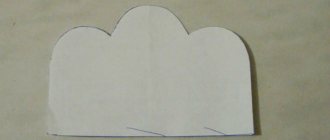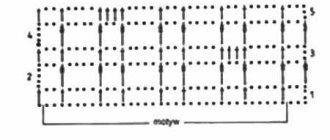Purpose of decorative pillows
Homemade pillows look great on sofas, will serve as an excellent addition to the interior of a child’s room, living room or bedroom, and will make a set of country furniture more comfortable.
A variety of pillows will find their place in any living space, on vacation, and even in a car.
A stylish hand-sewn pillow will be an excellent gift for a loved one, and making interesting options for interior pillows can bring additional income.
How to sew it yourself
How to learn to sew like an adult? To do this, you need to at least arm yourself with useful instructions and video tutorials, as well as prepare all the necessary things.
To sew pillowcases you will need:
- textile;
- threads that match the color of the fabric;
- sewing machine, an overlocker is suitable for home sewing;
- sharp tailor's scissors;
- chalk, soap or a special fabric marker;
- tape measure;
- pins, preferably English ones;
- zipper if you decide to sew a pillowcase with a zipper.
It should be noted that beginners often practice sewing from old things. For a pillowcase, it can be an old sheet, a duvet cover or a baby's diaper, and even jeans in the case of patchwork.
How to sew a 50 by 70 wrap pillowcase step by step
will tell you how to sew a 50x70 pillowcase :
- First you need to cut a piece of material of the size that suits you. To do this, calculate its width and length.
In our case it will be:
- 50+2=52 (cm), where
- 50 cm – product width;
- 2 cm – seam allowance;
Next, calculate the length of the pillowcase:
- 70*2+2+2+30=174 (cm), where
- 70 cm – product length;
- 2 cm – seam allowance;
- 30 cm - the smell that holds the pillow in the pillowcase.
In general, you need to cut the fabric 52 cm wide and 174 cm long, that is, 52 by 174.
- Next, work on the shorter sides of the rectangle. Do this with a closed cut stitch.
- Place the material on the table, face down. Then measure 70 cm from one of the processed edges and use chalk, soap or a special marker to draw a straight line under the ruler.
- Now fold your future pillowcase correctly. Fold it along the marked lines, folding it face to face. In this case, one side should be 30 cm longer than the other. Wrap the longer side around the processed edge.
- Along the edges of the wrap, you need to cut out the fabric a little so that excess thickness does not appear in these places later.
- Finish the two remaining sides with a double hem. It turns out that you will sew half of the product, wrapping it in 2 sections, and the other part - in 3, since the smell also needs to be embedded.
- At the end of the work, turn the product inside out and iron it.
How to sew a 50 by 50 and 40 by 40 wrap pillowcase
Of course, square models are sewn in a similar way. However, you need to re-calculate the amount of fabric for your product.
- So, for a 50 by 50 cm model, you need to cut material 52 cm wide and 134 cm long:
50+2=52 (cm), where:
- 50 cm – product width;
- 2 cm – seam allowance.
50*2+2+2+30=134 (cm), where:
- 50 cm – product length;
- 2 cm – seam allowance;
- 30 cm - the smell that holds the pillow in the pillowcase.
For a 40 by 40 cm model, you need to cut fabric 43 cm wide and 103 cm long.
40+1.5=41.5 (cm), where:
- 40 cm – product width;
- 1.5 cm – seam allowance.
40*2+1.5+1.5+20=103 (cm), where:
- 40 cm – product length;
- 1.5 cm – seam allowance;
- 20 cm - the smell that holds the pillow in the pillowcase.
How to sew a pillowcase with a zipper
And now you will learn how to sew a beautiful pillowcase with a zipper in a simple way using the example of a 50 by 50 cm square shape.
So, you will need a zipper 50 cm long , as well as fabric 50 by 102 cm:
- Fold your fabric in half, with the right side on the inside. Next, sew the side seams and leave the armhole unstitched. Finish the cuts with a zigzag stitch, but you can also use an overlock stitch.
- Unfasten the clasp. Turn the top side out so that the teeth on the front side are facing up.
- Iron the clasp.
- On the front side, pin the fastener with pins, while stepping back about 1 cm from the edge of the fabric.
- Sew the fastener to the product using the special foot on your machine. The distance from the side cuts should be 2.5 cm.
- On the inside, stitch about 2.5 cm from the side seams to the fastener. In this case, make the line 3 mm above the zipper.
- Turn the pillowcase inside out.
How to sew a pillowcase with ears or edges
A pillowcase with ears or edges is otherwise called an Oxford style pillowcase. The technology for sewing it is a little more complicated than conventional ones. But it will look original and stylish, so it’s still worth experimenting.
Let's look at an example of sewing on a rectangular model measuring 50 by 70 cm . To do this you will need a piece of material 63 by 190 cm:
- Finish the 63 cm sections with a hem stitch.
- Place the fabric so that the right side is on top, and bend the fabric 70 cm from the edge with the inner side.
- Now you need to measure the fold line of the wrap from the edge - this is 5.5 cm of the folded fabric.
- Turn the inside side up, leaving a distance of 5.5 cm.
- Grind off the cuts on both sides, stepping back 0.5 cm from the edges.
- Turn your garment inside out, press the seams and press.
- Measure 5 cm from the edge, then draw a 50 by 70 cm rectangle with a ruler. Use soap, chalk, or a washable marker, since the line will be drawn on the front side.
- Place the finishing line along the drawn line.
Types of decorative pillows
Interior pillows are in demand and popular not only as an element of room decor, but as a convenient household item.
Types of decorative pillows are divided into:
- classically shaped products for sofas that make relaxation more comfortable,
- rollers for beds and upholstered furniture,
- special pillows for the kitchen or dining room,
- floor pillows for a children's room or recreation area,
- small camping pillows that you can take with you outdoors,
- car pillows that make the trip more comfortable.
Pillows can have a classic or non-standard shape, depending on the purpose and imagination of the master. The size and design depend on the application of the decorative product.
Beautiful pillow made of small patches (patchwork)
Patchwork allows you to use a lot of small scraps left over from previous works to update your interior with your own hands and create your own unique atmosphere of comfort. A small sofa cushion is ideal for learning the basics of this fancy technique.
Important! For patchwork sewing, fabrics that are uniform in density and texture are selected. Pre-washing for shrinkage is also necessary.
Fans of patchwork have a solid selection of beautiful patterns according to which the patches should be placed in the product. Sometimes these schemes are complex and intricate. We bring to your attention a simple pillowcase made from triangular scraps, which even the most experienced needlewoman can sew. For such a pillow, two types of different fabrics are enough, but you can use four.
As a first experience, we suggest sewing a pillowcase on a pillow measuring 25*25 cm.
- To begin, draw an isosceles right triangle on paper with side lengths of 12.5, 12.5 and 18 cm. Cut it out.
- Attach the triangle to the fabric, trace, draw 1 cm seam allowances and cut along the outline of the allowances. You should get a triangle measuring 13.5*13.5*19 cm.
- Thus, cut out 8 identical triangles from different types of fabric.
- Cut out a 27*27 cm square from a single piece of fabric. This will be the back part of our pillowcase.
- Lay out the triangles on the table surface and select the optimal composition.
- Fold the triangles forming squares 13.5*13.5 cm in pairs and sew them along the hypotenuse line (the longest side), retreating 1 cm from the edge. You should end up with four multi-colored squares that are the same size.
- Press the seams from the inside out as shown in the picture.
- Now sew the squares together in pairs. You will get two rectangles measuring 12.5*25 cm. Sew them together along the long side.
- The front side of the pillowcase is ready. Trim off excess fabric at the corners from the wrong side.
- Place both sides of the pillowcase face to face, stitch them along three sides, leaving 1 cm from the edge. Finish the edges with an overlocker or zigzag stitch.
- Sew a 25 cm long zipper into the armhole following the example of the previous master class.
The shredded pillow is ready!
Step-by-step process (photo gallery)
Step-by-step patchwork process
Patchwork pillowcase: finishing the process
Video tutorial
Fabrics
To make decorative pillows, it is better to take dense fabrics:
- natural cotton and linen materials,
- denim or knitted fabric,
- different types of fur and satin,
- furniture fabrics for upholstery.
To create a good pillow with your own hands, it is important to choose the right material in terms of properties, color and texture, so that the decorative product complements your home interior.
Do-it-yourself bead brooch - 105 photos and video description of how to quickly and easily weave a broochDIY bird feeder - step-by-step master class and ideas for beginners and schoolchildren (155 photos)
Do-it-yourself beads: 120 photos and video description of how to weave beads
Decorative pillows in rooms with different functions
Living room
The most common place to place decorative pillows is a sofa and an armchair. In the living room, like in no other room, pillows are functional - they help you sit comfortably in the relaxation area, decorate the interior, indicate a stylistic affiliation or support the chosen theme of the space.
In the interior of the living room, you can use pillows of different shapes and sizes, with many options for colors, prints, patterns or plain fabrics. A “set” of sofa cushions made using the same color combinations, but in different variations, looks original and at the same time stylish.
Pillows can act as a textural rather than a color accent. For example, pillows with covers made of fur (or its analogues), “shaggy” products, with fringe over the entire area.
Bring an element of symmetry to your living room interior. Identical pairs of pillows placed in a special way on armchairs and sofas will transform your design and streamline the image of the room.
In the living room space, which also plays the role of a library, pillows on the sofa and armchairs are simply necessary. Reading lovers can spend hours engaged in a pleasant activity, and a comfortable location in the recreation area, in this case, plays an important role.
Bedroom
Of course, a bedroom is incomplete without pillows. But we will not talk about those elements of the greasy place that we need for comfortable rest and sound sleep. Decorative pillows that decorate the bed can serve not only the functions of decorating the space. For example, pillows in the form of bolsters are very convenient to place under your feet to restore blood circulation after a hard day of work spent on your feet.
Bright, colorful pillows can bring not only beauty, but also orderliness to the bedroom interior. Pillows placed in a certain way on the sleeping area bring symmetry to the image of the bed and the entire space.
In the bedroom space, bright decorative pillows will help coordinate various interior items. For example, on the bedside tables you decided to install colorful table floor lamps, made in a color that is not used anywhere else in the room. Finding fabric with colors of a similar tone will not be difficult; as a result, the interior of your bedroom will be more harmonious, orderly, but at the same time bright.
Pillows can be used to link the overall design concept of the area in the bedroom - the segment of rest and sleep. Even if your bed (its headboard) and sofa or chair have different upholstery in color and texture, you can connect these separate interior elements by selecting textiles for both zones.
Children's room
In a children's room, pillows are used as decoration exclusively by parents. Children prefer to have pillow fights, jump from “pillow” mountains and throw them. With such a safe item for games, parents can be confident in the integrity of not only their children, but also the interior items of the playroom. In a small child's room, you can use pillows in the shape of animals, with images of fairy-tale and cartoon characters. In a teenager's bedroom, more restrained options are used, but it all depends on the child's temperament and taste preferences.
In a girl’s room, especially close attention is paid to decorative pillows. Beautiful ruffles, fringe and tassels decorate this piece of furniture. Fur, plush, shiny and embroidered - there are many variations. On ordinary days, pillows decorate the sleeping area; when receiving guests, they are used as ottomans for gatherings on the floor.
Dining room
Even in the dining room, you can use pillows to more comfortably accommodate household members and, possibly, guests. If your dining room or kitchen, which has a eating area, is equipped with a small sofa or mini armchairs for each family member, soft pillows will come in handy. Not only the direct purpose of the pillows, but also their bright or original appearance will benefit the formation of a unique image of the room.
Filler
To fill pillows, natural, synthetic non-woven materials and natural raw materials are usually used.
Natural padding includes:
- down and/or feather of a bird,
- animal fur.
Such a filler requires high-quality care, since small parasites can appear in it.
Herbal filling involves the use of various aromatic herbs. The service life of such a pillow is short, it must be protected from moisture. Plant content has a positive effect on human health.
Synthetic fillers include non-woven artificial materials:
- Do-it-yourself dolls made of fabric - 145 photos and video description of how to sew a beautiful doll quickly and easily
- How to sew curtains for the kitchen - a detailed description of how and what to sew curtains for the kitchen from (video + 135 photos)
Do-it-yourself felt toys: ideas, patterns, templates and felt patterns (135 photos and videos)
- holobiber,
- foam rubber,
- padding polyester,
- small silicone beads.
The advantages of synthetic padding are ease of maintenance and long service life.
Filling
Sewing a pillowcase with your own hands is half the battle, because you still need to stuff it with something. All fillers are divided into two types:
- natural (animal and plant origin);
- artificial.
Animal origin
Down, feathers, and wool are natural fillers. Among the advantages:
- sanitary and hygienic properties;
- long service life;
- do not cake.
Materials for decorative pillows are practically not used, because they are not fluffed like sleeping pillows.
Vegetable origin
Suitable fillers growing from the ground include:
- buckwheat husk;
- bamboo;
- medicinal herbs;
- hop cones.
The materials require special care, because they can become damp, rot, and rot, which will negatively affect health. What else can you fill with homemade sofa cushions?
Artificial
Cotton wool, pieces of worn-out items, padding polyester, which are used to make outerwear - these materials are not suitable, because they can cake and form clumps. Among modern materials it is worth noting synthetic fluff and holofiber. In terms of hygienic properties, they are similar to swan down, but will last much less - 7-10 years. Another advantage of fillers is elasticity, which remains virtually unchanged over the years.
For children's clothes, you need a hypoallergenic material - silicone granules are great because they do not get wet. It’s easy to stuff a sofa pillow with your own hands – you need to leave a 2-4 cm gap and just pour the filling there. Silicone beads are easy to keep clean by simply rinsing them with your hands in water.
You can wash the artificial filler in the washing machine - it will be free of dust and will become suitable for further use.
Beginning of work
The first step in creating an interior pillow is to think about its purpose and appearance.
Having decided on the application, design, color and size of the future product, it is important to choose the right fabric for sewing.
The material should be in harmony with the rest of the home furnishings and correspond to the intended sketch.
Features of work
When sewing pillows, it is important to take into account the small nuances of working on this decorative item. The product consists of a pillowcase, filling and decorative cover. The top cover is made so that it is easy to remove for cleaning or washing.
When cutting, the size of the cover should be made a couple of centimeters larger than the pillowcases.
When considering how to sew decorative pillows with your own hands, it is worth considering these features of the work.
What material and filler to choose for making your own pillow: tips
There are pillows in every home. They are an indispensable attribute for sleep. In addition, pillows are no longer just an attribute for sleeping. Currently, they are a stylish interior decoration. You can see beautiful decorative pillows not only in the bedroom, but also in the living room, nursery and even in the kitchen. Many people decorate kitchen sofas with beautiful pillows; they also place them on the floor and on chairs. Pillows make the seating area more comfortable, which is why they are so loved and used wherever possible.
Children's rooms and cribs are also decorated with beautiful original pillows of bizarre shapes. It's comfortable, stylish and modern. In short, they are an important part of modern room design.
You can sew pillows with your own hands. It won’t take much time and will help needlewomen occupy their leisure time. Before you start sewing a pillow, decide what it is needed for:
- Pillows for sleeping. Must be comfortable, durable, practical and durable.
- Decorative pillows. They can be of non-standard shape, with voluminous decorations.
Particular attention should be paid to the choice of filler:
- Vata . Cheap, but short-lived and low-quality filler. Firstly, it is very difficult to stuff the cotton wool into the pillow evenly. Secondly, the cotton wool will begin to clump into clumps very quickly. Thirdly, with each wash you will have to rip out the pillow and take out the cotton wool.
- Sintepon . Also not the best filler option. This material also clumps quickly. After a short period of use, the pillow will lose its appearance.
- Pooh . Down pillows are soft and airy. But the downside is that some people are prone to down allergies. While down pillows used to be considered the best, many people now try to avoid down in their homes.
- Holofiber . Hypoallergenic material, does not pill. With careful use it will last more than 10 years. The most suitable filling for pillows.
- Silicone granules or polystyrene beads . This material is also considered hypoallergenic. Dry cleaning only recommended. Most suitable for decorative pillows, sleep pillows can make a rustling sound from the balls rolling, which may not be to everyone's liking.
If you need a pillow for sleeping, make a beautiful removable pillowcase, but do not decorate it with voluminous elements. Because during sleep the parts will press and interfere. For such a pillow, it is better to choose a beautiful cotton fabric and make it as simple as possible. If we are talking about a sofa cushion, then various small and large elements are appropriate here.
The pillow material should not be electrified; it is advisable to give preference to natural fabrics.
The following fabrics are suitable:
- Calico
- Cotton
- Silk
- Batiste
- Satin
- Percale
When sewing a pillow, follow these rules:
- For a delicate filler, choose a soft fabric cover.
- If the filler is fluffy, then the fabric of the cover should be thick.
- The filling and fabric of the cover must match each other. For example, bamboo filling goes well with a ventilated cotton cover.
Work on creating a decorative pillow
It’s better to prepare everything for work in advance.
In addition to the fabric, you should stock up on:
- scissors,
- life-size patterns,
- a piece of dry soap or chalk,
- needles,
- threads,
- sewing machine,
- decorative elements.
The procedure for making a simple interior pillow
It is recommended to wash new fabrics before cutting parts, as they may shrink.
- Having placed the pattern on the wrong side of the material, it should be traced along the contour. For convenience, the pattern should be secured with pins.
- The parts are cut with scissors, taking into account the margin for seams.
- Having folded the parts of the product with the right side inward, sew the seams. It is better to sew using a sewing machine, but you can do the work by hand.
- One side is not completely stitched; the product must be turned inside out and ironed.
- Decorate the pillow, fill it and sew up the seam.
A simple square pillow will not require much effort or time to work. A master class on making decorative pillows with your own hands can be easily found online and in video format.
Pillowcase with zipper
A zipper is a convenient way to firmly “pack” a pillow.
To sew a square pillow 50*50 cm with a zipper, you will need a piece of fabric measuring 52*102 cm and a hidden zipper 50 cm long.
- Fold the piece in half with the right sides facing in and sew the side seams, leaving the armhole unstitched. Finish the edges with an overlocker or zigzag stitch.
- Unzip. Turn the top side out so the cloves are facing up on the right side. Iron. The bottom part should be parallel to the top.
- Using safety pins, pin the zipper on the front side, leaving 1 cm from the edge of the fabric.
- Using a special zipper foot, stitch it to the pillow. Don't forget to make a 2.5 cm indent from the side cuts, as shown in the picture.
- On the wrong side, sew a 2.5 cm long stitch from the side seams to the zipper, the stitch should run 3 mm above the zipper.
- Turn the pillowcase inside out and insert the ends of the zipper into the resulting holes. Trim excess if necessary.
Step-by-step process (photo gallery)
The pillow is ready!
The result is a pillowcase with a zipper
Turn it inside out
Place a seam from the wrong side on both sides (2.5 cm from the edge) just above the zipper
Step back 2.5 cm from the side edges. Using a special foot, sew the zipper. Step back 1 cm from the edge. Attach the zipper with safety pins.
Both sides should be parallel Press the zipper Open the zipper
Leave the zipper opening unstitched. Place a seam 1 cm from the edge.
Stitch and overcast the side seams
Video tutorial
Cushion
The furniture cushion that complements the sofa usually has a simple geometric shape. Most often it is a rectangle.
Such items are subject to wear and tear during use faster than the sofa itself. The opportunity to buy a similar pillow is not provided by furniture manufacturers.
Therefore, there is a need to sew such a pillow yourself. This is a simple job, most of the success of which lies in the correct selection of material for the cover.
If possible, the fabric should be found similar to the upholstery of the sofa. If there is no such fabric, then you need to think through the design of a new pillow so that it fits organically into the interior.
In any case, the texture should match the upholstery of the sofa, and the color should be in harmony with the design of the room.
The easiest way to copy a factory copy is to rip open the old one and measure the cover.
Using these measurements, draw a drawing, cut and seam the parts of the new product.
How to sew covers for sofa cushions
Detailed instructions for sewing a pillowcase. It is better to take colorful fabric for this work so that the item turns out beautiful.
The photo shows an example of bright crafts that can be made using the technology described below.
To sew a cover for a sofa cushion, take:
- small pieces of fabric;
- pins;
- threads of suitable colors;
- scissors.
We measure out the bedding. We multiply the resulting value by two - we get the width of the segment, and the length is cut to the size of the pillow. Don’t forget to add 3 cm to the seams in width, and 1 cm in length.
Laying the wrong side up, fold one edge of the fabric and iron it thoroughly. Then we wrap it again and iron it. We machine stitch the folded edges closer to the inside. We do the same with the second opposite edge. The pillowcase for the sofa cushions is ready.
Fold one side of the rectangle halfway. Then we turn the workpiece over and bend the second edge so that it overlaps the first. We do this in such a way that the middle part is equal to the size of the pillow.
Stepping back a centimeter from the edge, sew from the top, then from the bottom. You can additionally go through a zigzag.
Making a pillowcase for a sofa cushion is coming to an end. All that remains is to turn the craft inside out and put it on.
Having straightened all the edges, turn the finished product over and place it on the sofa. You can start making the next pillowcase.
These are the beautiful things you can make with your own hands.
Decorative design
The most fun part of the creative process of creating an interior pillow is thinking about its design.
The easiest way is to use plain textured fabrics, the color of which matches the design of the room.
Pillows for a children's room often serve as an element of games. They should have bright colors and interesting design.
In children's design, bright applications on cartoon and fairy tale themes, original pillow toys in the shape of stylized animals or famous cartoon characters are appropriate.
You can make your own children's decorative pillows from a bright T-shirt with an original design that is too small for the child. Patterns for sewing funny children's pillows can be easily found online or drawn yourself.
You can complement the interior pillow with stylish appliqué, embroidery, satin ribbons, additional details in the form of an overhead bow or animal ears, fringe or frills.
External design depends on the skill and imagination of the craftsman, as well as on the purpose of the product.
Popular design trends allow the use of appropriate decorative methods: patchwork, stylized ornaments, thematic embroidery, tassels, bows, and so on.
The main thing is that the result of the work is a comfortable decorative pillow that harmoniously fits into the interior design.
Types and forms
The shape of a sofa cushion with your own hands is the main parameter that should be determined before starting work. They are:
- square (dumka);
- bolster pillow;
- round;
- in the form of toys.
Square thoughts are easier to transform with your own hands than others. Products in the form of flowers look original, especially if they are large and bright. You can do the decoration for sofa crafts with your own hands, following the master classes described below. Even if you didn’t succeed in sewing a beautiful craft the first time, you shouldn’t give up, because you learn from mistakes. It’s worth trying to make patchwork-style products from scraps.
Knitted
Knitted or crocheted items always attract attention, and pillows are no exception. This type of decor is more difficult to do, but the result is worth it. Knitted crafts can be washed in a machine; this will not spoil their appearance. The cover can be knitted entirely with your own hands or decorated with individual elements.
Drawings, embroidery, appliqués
If you decide to decorate with embroidery, you should remember a few rules. This:
- Do not embroider with beads. It is uncomfortable to sleep on, and problems may arise when washing.
- You should not embroider with satin stitch, it gets very dirty and slips.
- It is worth embroidering a wide edging along the edge. It is good to hide the last seam behind it.
To transform pillowcases, you can use easy methods - applying patterns or appliqués. In the first option, just pick up markers of different colors and use your imagination. In the second, you need to cut the fabric into small pieces and sew it to the pillow. The shape of the segments should correspond to the decorating style.
For children
To make your child comfortable, choose eco-friendly, hypoallergenic materials. For children, the shape of the product, its color, hanging legs, pockets and other small details are more important. You can sew a sofa cushion in the shape of letters, numbers or toys. You can also make a cat, owl or elephant for games.
From old things
If you have a limited budget, you can come up with a design using improvised materials. By choosing some clothes from old things, you can sew some good sofa cushions with your own hands. Making a pillowcase is simple - stitch along the outline of a sweater or jacket, leaving a hole and you're done.
Photos of decorative pillows with your own hands
Tell your friends
